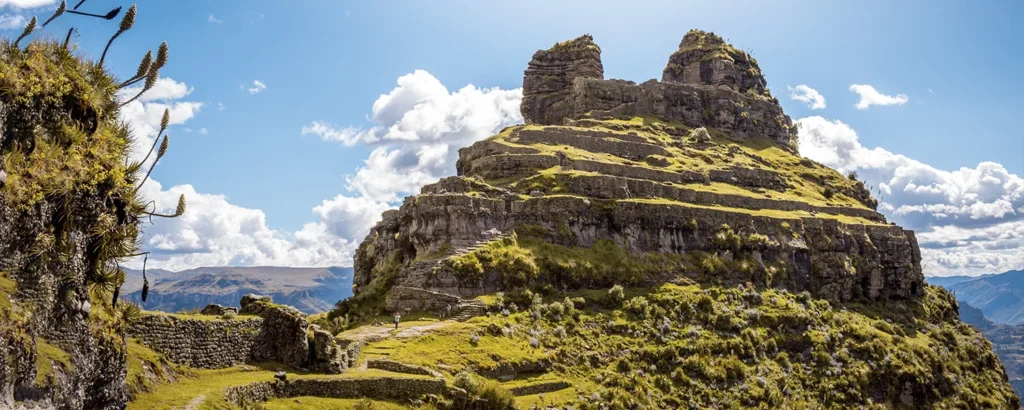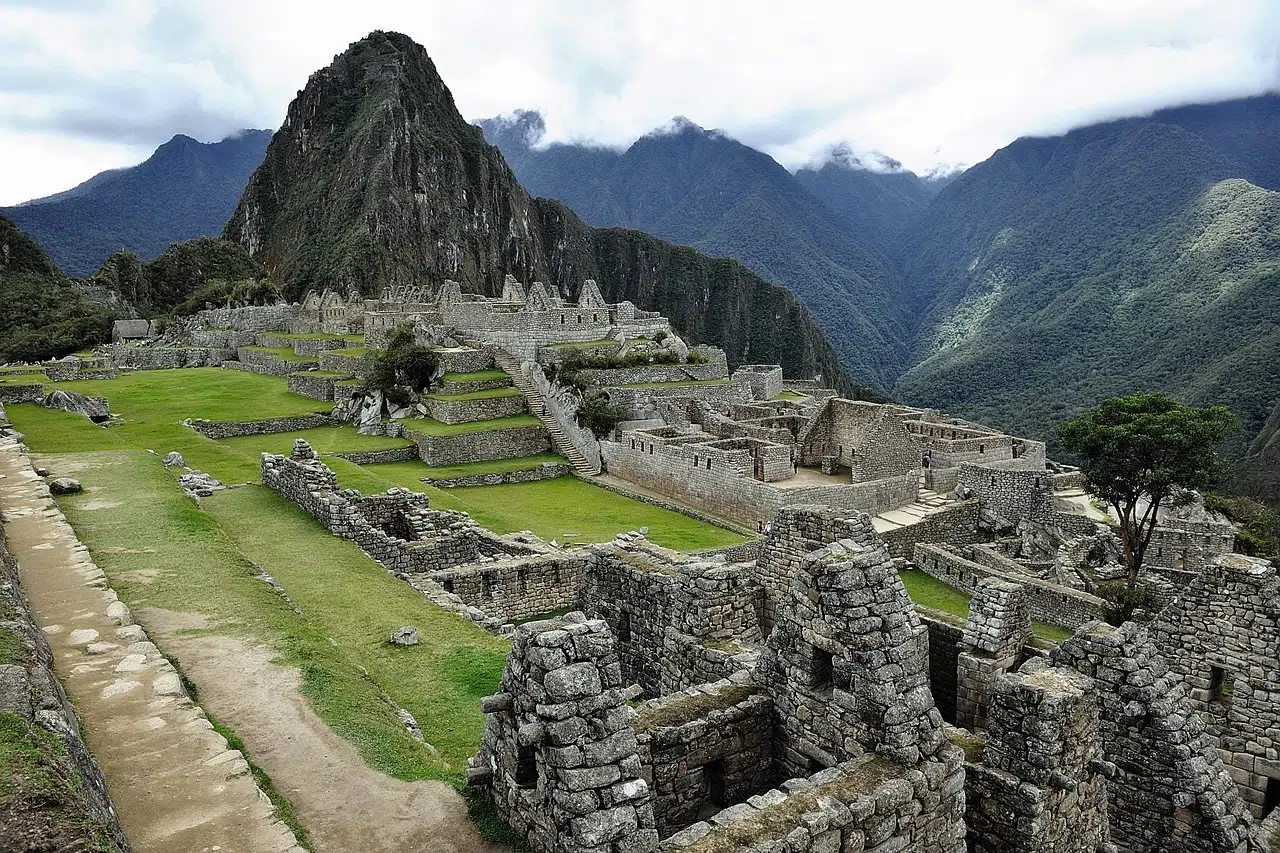Waqrapukara is one of Peru’s hidden treasures, located high in the Andes and accessible only to those willing to take an adventurous journey. This fortress, often overlooked in favor of more famous sites, provides a rare opportunity to explore an Inca sanctuary set against stunning landscapes. Located about 100 kilometers (62 miles) from Cusco, Waqrapukara is reachable through various routes that cater to different levels of experience and adventure. Whether you prefer public transportation, self-driving, or joining a guided tour, this guide will help you understand the best way to reach Waqrapukara from Cusco.
Planning your trip in advance is essential, as Waqrapukara’s remote location requires preparation. From choosing the right transportation option to planning for altitude and weather, following this guide will ensure a safe and enjoyable adventure to one of Peru’s most enigmatic archaeological sites.
Table of Contents
Available Routes to Waqrapukara
There are several ways to reach Waqrapukara, each with its own benefits depending on budget, experience, and comfort level. The main routes include public transportation, private vehicle, or a guided tour, each offering a different way to experience the journey to this incredible site.
Public Transportation
For budget-conscious travelers or those who enjoy a more independent experience, public transportation can be an economical way to reach Waqrapukara. Here’s a breakdown of the steps involved:
- Bus to Acomayo
Start by taking a bus from Cusco to the town of Acomayo. The bus ride takes approximately 2-3 hours and can be a cultural experience in itself, as you’ll share the journey with locals and enjoy views of the Andean countryside. Buses depart from Cusco’s main bus terminal and can vary in comfort and frequency, so checking the schedules in advance is advised. - Taxi or Shared Vehicle to Huayqui
From Acomayo, you’ll need to arrange a taxi or shared vehicle to take you to the small community of Huayqui, which is closer to the Waqrapukara trailhead. Local transportation options may be limited, so be prepared to negotiate fares and wait if necessary. - Hiking to Waqrapukara
Once in Huayqui, the remaining portion is a hike, which usually takes around 3-4 hours, depending on your pace. The trail is scenic but can be challenging due to altitude, so take time to acclimate and bring plenty of water.
Private Vehicle
Renting a private vehicle from Cusco provides greater flexibility and allows you to explore the area at your own pace. Driving from Cusco to Waqrapukara is a scenic journey through the Andes, but it requires some navigation skills and a bit of preparation. Here’s what to expect:
- Rent a 4×4 Vehicle
The road to Waqrapukara involves unpaved and sometimes steep terrain, so renting a 4×4 vehicle is highly recommended for safety and comfort. Roads in rural Peru can be challenging, especially if you’re not accustomed to driving in mountainous areas. - Route and Directions
From Cusco, drive toward Acomayo and continue to Sangarará or Huayqui, which serve as starting points for the hike to Waqrapukara. Depending on your chosen route, you may find some signage, but it’s advisable to use GPS and download offline maps in case of limited connectivity. - Park and Begin the Hike
Once you reach the trailhead, park in a safe area (check with locals if necessary), and prepare for a 2-4 hour hike to reach Waqrapukara. The trek provides an intimate way to appreciate the landscape and natural beauty of the Apurímac Canyon.
Guided Tours
For those seeking a convenient, hassle-free option, guided tours are available from Cusco. Guided tours usually include transportation, meals, and a knowledgeable guide, making the experience informative and comfortable.
- All-Inclusive Packages
Most tours to Waqrapukara depart early from Cusco, often around 4 or 5 a.m. These packages generally include round-trip transportation, meals, and a guided hike. Some even provide trekking poles and other essential gear. - One-Day or Overnight Options
You can choose from one-day trips or overnight excursions, depending on your preference. Overnight tours typically involve camping near Waqrapukara, allowing for sunrise views over the fortress and a more relaxed pace. - Advantages of Guided Tours
Besides the convenience of arranged transportation and a local guide’s insights, guided tours help support local communities. Tour guides often come from nearby areas, and the tours can contribute to local economies, encouraging sustainable tourism.
You can also read:
- Waqrapukara Cusco: The Complete Guide to Peru’s Hidden Inca Fortress
- The Ultimate Guide to Humantay Lake Cusco: Everything You Need to Know for Your Adventure
- Palcoyo Cusco: The Complete Guide to the Alternative Rainbow Mountain
- The Ultimate Guide to Rainbow Mountain Cusco, Peru: Everything You Need to Know
Step-by-Step Directions for Self-Drive
For those who prefer the self-drive route, here’s a step-by-step guide to help you reach Waqrapukara from Cusco:
- Start from Cusco
Begin your journey early in the morning from Cusco to make the most of the daylight. Take the Cusco-Puno highway (Route 3S) and drive south toward the town of Urcos, about an hour from Cusco. - Continue to Acomayo
From Urcos, follow the signs to Acomayo, which will take about another hour. The road here winds through Andean landscapes, with breathtaking views and the opportunity to see local life. - Head Toward Sangarará or Huayqui
In Acomayo, you’ll find signs leading to Sangarará or Huayqui. Check with locals if needed to confirm you’re on the correct route, as some paths can be difficult to navigate. Road conditions may be rough, so proceed carefully. - Arrive at the Trailhead and Begin the Hike
Park your vehicle near the trailhead and secure it if possible. Prepare your backpack, water, and other essentials, then set off on the hike. Depending on the trail you’ve chosen, the hike can take between 2 to 4 hours. Along the way, enjoy the views of the Apurímac River and surrounding peaks.
Pros and Cons of Different Transportation Options
Each transportation method has its own advantages and potential drawbacks. Here’s a comparison to help you choose the best option:
- Public Transportation
- Pros: Affordable and offers a local experience.
- Cons: Requires multiple transfers, limited comfort, and can be time-consuming.
- Private Vehicle
- Pros: Offers the greatest flexibility in timing and stops along the way.
- Cons: Requires navigation skills, road knowledge, and a 4×4 vehicle for rough terrain.
- Guided Tour
- Pros: Most convenient, includes transportation, meals, and a guide.
- Cons: More expensive, fixed schedule, less control over pace.
Tips for Planning Your Route
- Acclimatize Before the Trip
Waqrapukara is located at a high altitude, so it’s essential to spend a few days in Cusco or another high-altitude location to acclimate. - Pack Essentials
Bring water, snacks, and sun protection. Even on guided tours, it’s a good idea to have a personal supply of essentials. - Check the Weather
The Andean climate can change rapidly. Checking the forecast and packing layers can make your journey more comfortable. - Download Offline Maps
Since mobile signal can be weak in remote areas, having an offline map can be very useful, especially for self-drivers. - Carry Cash
Many small towns and rural areas do not accept credit cards, so carrying cash for any unexpected expenses is advisable.
Conclusion: Choosing the Best Way to Reach Waqrapukara
Waqrapukara is a unique destination that offers a rewarding challenge for adventurous travelers. Each route, whether public transportation, self-driving, or a guided tour, offers a different perspective on the journey to this ancient fortress. The decision ultimately depends on your budget, comfort level, and how much flexibility you want during the trip. With careful planning and an understanding of the different options available, reaching Waqrapukara can be a smooth and unforgettable experience.
Exploring Waqrapukara allows you to connect with Peru’s rich history and landscapes in a way few other destinations offer. Whichever route you choose, this journey will bring you face to face with the Inca legacy and the breathtaking beauty of the Andes, making it a memorable addition to any Peru itinerary.



